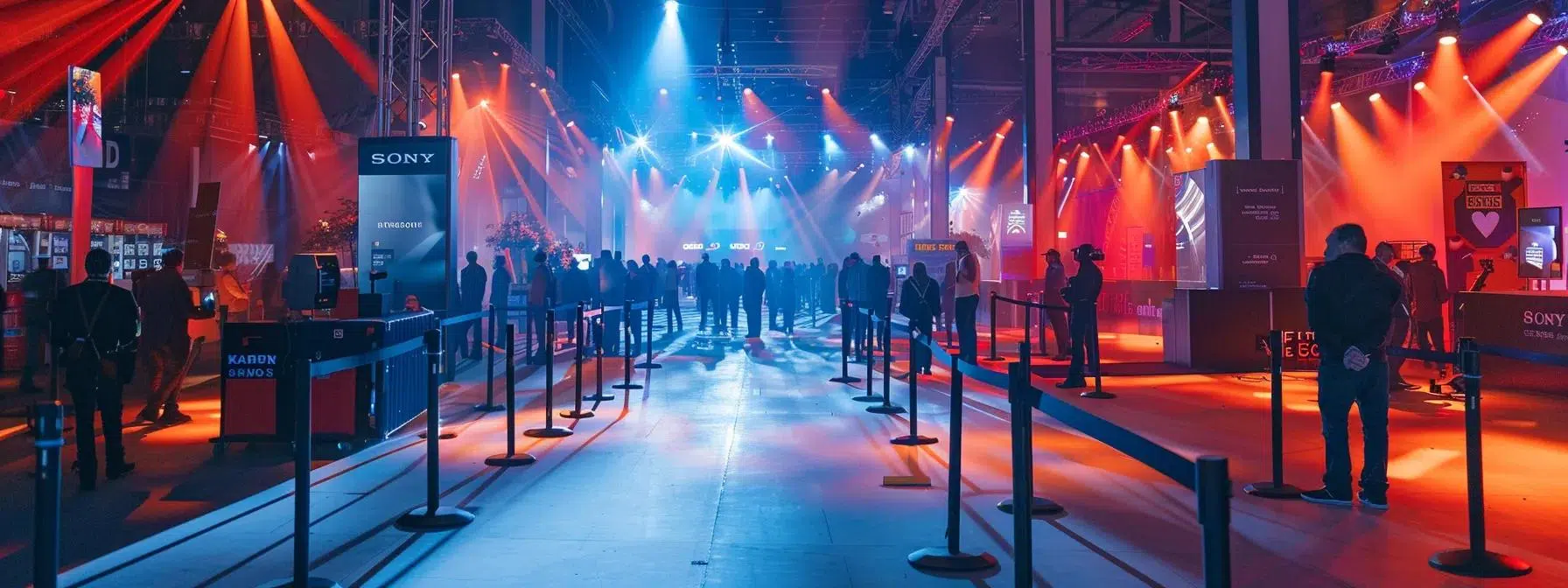Large festive events present unique challenges for event planners and coordinators alike. Ensuring smooth flow, safety, and effective communication is paramount when managing crowds that can number in the thousands. In these settings, combining practical crowd control barriers, effective signage, and well-trained security personnel minimizes risks ranging from medical emergencies to acts of vandalism. This article discusses proven strategies, legal considerations, and innovative technologies that are critical to crowd control during festivals, concerts, sports events, and public gatherings. With rising concerns about large-scale security and safety standards, event organizers must proactively plan to mitigate potential bottlenecks, restricted access, and emergency evacuation issues. Ultimately, efficient crowd management allows for a festive atmosphere that is secure, accessible, and enjoyable for all participants while reducing liability risks for organizers. The following sections detail step-by-step strategies and actionable insights that integrate established crowd management principles with modern event technology.
Foundational Strategies for Effective Crowd Control at Festive Events
Large festive events require foundational crowd control strategies that incorporate risk assessment, planning, communication, legal compliance, and site layout design. This section examines the core building blocks that underpin effective crowd management. First, it is essential to assess potential risks inherent at any large-scale gathering, taking into account factors such as the venue’s capacity, weather conditions, and the demographics of the crowd. By evaluating these risks, event organizers can inform planning decisions and allocate resources more effectively.
Developing a comprehensive crowd management plan builds on this risk assessment. This plan should detail roles, action protocols, and communication loops. A good plan includes contingency measures for medical emergencies and real-time public announcements. It further outlines the use of crowd control barriers, stanchions, and designated emergency exits. Sustainable plans also include ongoing staff training sessions, ensuring that all team members know their responsibilities during normal conditions as well as during rapid evacuations.
Establishing clear lines of communication for event staff is another crucial element. Walkie-talkies, mobile apps, and other real-time communication systems enable quick responses to unexpected issues. Consistent updates via a command center help coordinate different teams, such as security, first aid, and facility management. These real-time solutions can be reinforced using modern crowd monitoring technologies that provide live feedback on crowd density and behavior.
Legal frameworks and permit requirements are also integral to any successful crowd management strategy. Organizers must work closely with local law enforcement and regulatory agencies to ensure all safety measures are compliant with existing laws. For instance, temporary fencing must often meet specific standards relating to structural integrity and emergency accessibility. Clear documentation, including permits, risk assessments, and incident reports, supports regulatory compliance and minimizes potential legal repercussions.
Finally, pre-event site design for optimal crowd flow is key. This design incorporates a strategic layout of barriers, peripheral roads for vehicular movement, and well-placed emergency exits. Organizers should consult architects and crowd management engineers to develop layouts that reduce areas of potential bottlenecks. Detailed digital simulations of crowd movements can inform barrier placement, ensuring that flows are smooth and unhindered. In addition, directional signage and clearly marked paths guide attendees safely throughout the venue.
Implementing Practical Crowd Control Solutions for Large-Scale Festive Events

Managing large-scale festive events requires practical solutions that can be quickly deployed on the ground. Among the most essential tools are physical crowd control barriers, efficient management of entry and exit points, and targeted staffing measures.
Strategic placement and use of physical barriers form the backbone of many crowd control strategies. Barriers made of steel or durable plastic provide robust protection against crowd surges. They offer a visible line that not only demarcates safe zones but also prevents individuals from inadvertently entering restricted areas. Modern crowd control barriers, including stanchions and temporary fencing, can be rearranged onsite as the crowd dynamics evolve. This flexibility is realized by integrating modular systems that can adapt to fluctuating crowd densities. For example, studies indicate that the use of physical barriers can reduce unauthorized zone crossing incidents by more than 25% during large events.
Managing entry and exit points efficiently is equally critical. To ensure smooth transitions, planners should adopt techniques such as staggered entry times and clearly marked emergency exits. Using advanced ticketing and access control systems minimizes waiting times at these congested spots. Dedicated lanes for security checks and first aid interventions also contribute to a streamlined process. Moreover, the incorporation of scanning devices and turnstiles can optimize throughput and prevent bottlenecks at the entry points. Outside the immediate security perimeter, digital ticketing systems can monitor real-time entries, providing data that is crucial for on-site adjustments.
Utilizing signage and wayfinding for attendee guidance is another effective strategy. Clear, prominent signs indicating restrooms, food services, exits, and emergency stations are vital for crowd safety. These signs should be placed at natural decision points along well-traveled paths. Wayfinding digital kiosks or mobile apps can further assist attendees in navigating large venues. Integrating these systems provides both static visual signage and dynamic digital directions ensuring that attendees are well-informed at every stage of the event.
Effective staff deployment for monitoring and response complements physical infrastructure. It is essential to have dedicated staff trained in de-escalation and emergency response. Event organizers typically establish an incident command center that coordinates on-the-ground efforts. This center tracks the status of various zones through surveillance and communicates directly with field teams responsible for directing traffic and managing crowds. In these high-stress scenarios, a structured chain-of-command minimizes confusion and expedites decisions.
Crowd density monitoring techniques and technologies add a modern, data-driven dimension to traditional crowd management. Thermal cameras, infrared sensors, and video analytics allow organizers to monitor the concentration of people and identify potential safety risks before they lead to dangerous conditions. These monitoring systems not only provide a real-time view but also store historical data that can be analyzed to improve future setups.
A detailed table below compares common crowd control barriers and their attributes:
| Barrier Type | Material | Durability | Ease of Installation | Visibility for Attendees |
|---|---|---|---|---|
| Steel Crowd Control | Steel | High | Moderate | High |
| Plastic Stanchions | Reinforced PVC | Moderate | Easy | Moderate |
| Temporary Fencing | Fabric/Metal | Moderate to High | Easy | High |
| Modular Barrier Systems | Composite | High | Easy | High |
| Retractable Bollards | Aluminum/Steel | High | Moderate | High |
Before the event, organizers review such tables to determine the most appropriate barrier type for the specific event conditions, ensuring that safety and efficiency are maximized.
Technology’s Role in Modern Crowd Control for Festive Events
Modern technology plays a crucial role in enhancing traditional crowd control methods at festive events. Surveillance systems, real-time communication tools, and access control mechanisms provide a deeper understanding of crowd behaviors, ultimately leading to safer and more efficient event management.
Surveillance systems for real-time crowd monitoring are indispensable for large-scale events. High-definition cameras and sensor-based systems continuously record crowd movements. These systems are integrated with advanced video analytics algorithms that detect anomalies such as surges, clustering, and unexpected breakdowns in flow.
Communication tools for coordinated team efforts empower event staff to respond dynamically to emerging conditions. Mobile apps, intercom systems, and digital radios form the backbone of this network. With these tools, security personnel, medical teams, and logistics coordinators can share updates instantly. Many systems now incorporate geo-tagging, which notifies specific teams based on their location—this is particularly useful in sprawling venues with multiple points of ingress and egress. The integration of such communication tools ensures that every staff member receives consistent and timely instructions, reducing reaction times during emergencies.
Ticketing and access control systems for regulating entry are another critical technological advancement. Modern systems use biometric scanners, QR codes, and NFC (Near Field Communication) to streamline the admission process. These electronic solutions reduce wait times and help manage the flow of people into the venue. They also offer additional security by verifying the authenticity of tickets and minimizing counterfeiting risks. Such systems are highly scalable and can integrate with attendee data analytics, thereby providing valuable insights into crowd demographic patterns and behavior.
Data analytics for predicting crowd behavior patterns enables event organizers to plan ahead. By analyzing historical data from past events, machine learning algorithms can predict peak crowd times, bottlenecks, and emergent safety risks. These predictive models bolster the decision-making process, allowing organizers to allocate additional resources during anticipated surge periods. With this analytical approach, events can maintain continual surveillance not only of current conditions but also historical trends, which are crucial for long-term planning and continuous improvement.
Drone technology for aerial oversight at festive occasions is an emerging field that offers another layer of crowd monitoring. Drones equipped with high-resolution cameras can provide live aerial views of the event, highlighting areas of high concentration and potential hazards. This bird’s-eye perspective complements ground-based monitoring and is particularly useful for assessing exit flow during evacuations or identifying unauthorized gatherings. The integration of drone data with ground intelligence enhances the overall situational awareness.
Below is a comparative table that outlines various technological tools used in crowd control and their benefits:
| Technology | Primary Function | Benefit | Example / Study Reference |
|---|---|---|---|
| Real-Time Surveillance Cameras | Continuous crowd monitoring | Early incident detection | Nguyen et al., IEEE, 2019 |
| Mobile Communication Apps | Team coordination | Faster emergency response | Integrated police and EMS communication systems |
| Electronic Ticketing Systems | Regulated entry/exit control | Reduced wait times | Case study from large-scale festivals |
| Data Analytics Platforms | Predictive crowd behavior analysis | Proactive resource allocation | Machine learning models in event management |
| Drone Surveillance | Aerial monitoring of large venues | Enhanced situational awareness | Pilot projects in sports stadiums |
Ensuring Public Safety Amidst Large Festive Crowds

Effective crowd management’s ultimate goal is public safety. Public safety measures are multifaceted, encompassing emergency preparedness, medical support, security, and protection for vulnerable individuals. Each aspect plays an integral role in mitigating risks associated with large gatherings.
Emergency preparedness and evacuation procedures must be clearly defined before the event. Organizers should develop detailed evacuation plans that include multiple exit routes and designated assembly points, ensuring that every attendee can leave the venue quickly during an emergency. This planning involves collaboration with local emergency services and law enforcement.
Medical support and first aid station accessibility are also critical. Large gatherings inherently increase the risk of medical emergencies, ranging from minor injuries to severe conditions like cardiac events. Providing strategically located first aid stations, equipped with defibrillators and staffed by trained medical professionals, is essential. In addition, visibility of these stations enhances the feeling of security among patrons and can sometimes avert panic in emergency situations.
Security measures to prevent unlawful activities are a vital component of public safety. Besides surveillance and physical barriers, thorough screening procedures—such as bag searches and metal detector use—can help deter and intercept potential threats. Collaborating with law enforcement ensures that any suspicious activity is quickly identified and managed. Venues can also use advanced analytics tools to predict and prevent break-ins or vandalism.
Managing lost children and vulnerable individuals is another concern at large events. Establishing designated family reunification zones and clear protocols for safely reporting and recovering lost children increases overall safety. Some events deploy wristbands or digital tracking systems for children and vulnerable groups. These measures not only help in rapid identification but also build confidence among parents and guardians.
Fire safety protocols for festive event settings must be rigorously implemented. Fire extinguishers, automatic sprinkler systems, and clear exit signage are non-negotiable elements in any large crowd scenario. Regular inspections and dry runs of fire evacuation procedures further ensure that all systems are operational and that staff are ready to assist in a fire emergency at a moment’s notice. Training sessions specific to fire safety, led by professional fire safety officers, can further reduce risks when large crowds gather indoors.
Below is a comprehensive checklist in list format that details public safety measures for large-scale events:
- Pre-Event Risk Assessment for Emergencies Thoroughly evaluate potential medical, fire, and security risks, ensuring upgrade of necessary equipment and reinforcement of safety measures to minimize hazards during the event.
- Develop and Communicate Evacuation Plans Create clear, illustrated evacuation routes and assembly points, and communicate these to attendees using signage and public announcements to facilitate efficient emergency exits.
- Deploy First Aid Stations at Strategic Locations Ensure that multiple, well-equipped first aid stations are accessible across the venue, staffed by trained professionals prepared to address both minor and major medical emergencies.
- Strengthen Security Protocols with Screening and Surveillance Implement rigorous screening measures and real-time surveillance systems to detect and respond quickly to any suspicious activities or potential threats.
- Implement Fire Safety Measures Conduct regular inspections of fire safety equipment, schedule fire drills, and ensure all exits are clearly marked and unobstructed to mitigate fire risks.
- Establish Family and Vulnerable Protection Zones Designate specific areas for lost children and vulnerable individuals, complete with staff and technology aids such as wristbands or digital tracking for rapid response.
- Train Staff in Emergency Response Procedures Provide comprehensive training on de-escalation techniques, evacuation protocols, and emergency communication to prepare all personnel for potential incidents.
- Coordinate with Local Emergency Services Involve police, fire departments, and ambulance services in planning and on-the-ground support to ensure a rapid and coordinated response during emergencies.

Conclusion
Managing large crowds during festive events requires a multi-layered approach blending risk assessment, advanced technology, and effective personnel training. By establishing foundational strategies, deploying practical crowd control solutions, leveraging modern technology, ensuring public safety, and conducting thorough post-event evaluations, event organizers can minimize risks and provide a safe, enjoyable experience. Each strategy plays a significant role—from legal compliance and site design to staff training and real-time monitoring—ensuring that all aspects of crowd control are covered.
As festive events continue to grow in scale and complexity, staying up-to-date with technological and procedural innovations is key. Organizers are encouraged to continually refine and adapt their methods, drawing on data analysis and real-world feedback. With these practices in place, large events can not only be safe but also highly successful, fostering positive experiences for both attendees and event staff. Future event planners should view effective crowd control as an ongoing process and invest in periodic training, rigorous analysis, and proactive technology integration.
Frequently Asked Questions
Q: What are the most important steps in crowd control at large events? A: The most important steps include thorough risk assessments, strategic placement of physical barriers, efficient management of entry/exit points, advanced surveillance and communication systems, and comprehensive staff training. These measures collectively ensure safe crowd movement and rapid emergency responses.
Q: How does technology improve crowd management? A: Technology enhances crowd management by providing real-time surveillance, predictive analytics, and efficient communication tools. Systems such as electronic ticketing, mobile apps, and drone monitoring enable organizers to detect crowd surges, manage entry flows, and quickly respond to incidents, thereby preventing dangerous situations.
Q: What legal considerations should organizers be aware of when planning an event? A: Organizers must ensure compliance with local laws and obtain necessary permits for temporary structures such as crowd control barriers and fencing. They should collaborate with law enforcement and regulatory agencies to meet safety standards, particularly regarding emergency exits and fire safety protocols.
Q: Why is post-event analysis important for crowd control? A: Post-event analysis is crucial because it provides detailed feedback on the crowd management process. By reviewing incident reports, comparing predicted and actual crowd behavior, and gathering stakeholder input, organizers can identify weaknesses, refine protocols, and implement improvements for future events.
Q: How can staff training improve the effectiveness of crowd control? A: Staff training improves crowd control by equipping personnel with de-escalation techniques, role clarity, and situational awareness. Regular drills and post-event debriefings help staff respond confidently to emergencies, ensuring smoother operations during high-pressure situations.
Q: What steps can be taken to ensure rapid medical response during events? A: Ensuring rapid medical response involves strategically placing first aid stations, providing on-site medical teams, and establishing clear communication protocols with local emergency services. Regular safety drills and pre-event risk assessments further enhance readiness to handle medical emergencies.
Q: How can organizers ensure smooth traffic flow at large events? A: Organizers can ensure smooth traffic flow by using clear signage, well-planned entry and exit routes, and technology-driven ticketing systems. Additionally, deploying staff to direct vehicles and pedestrians and coordinating with local traffic management authorities can prevent bottlenecks and disruptions.
Final Thoughts
Effective crowd control at festive events is achieved by integrating robust planning, innovative technology, and continuous training of personnel. Strategic risk assessment, efficient traffic management, and coordinated responses to emergencies create a safe environment for all participants. Ongoing evaluations and updates based on real-world feedback reinforce these systems and adapt them to evolving challenges. Ultimately, strong crowd management practices protect public safety and ensure that festive events are both enjoyable and secure.






